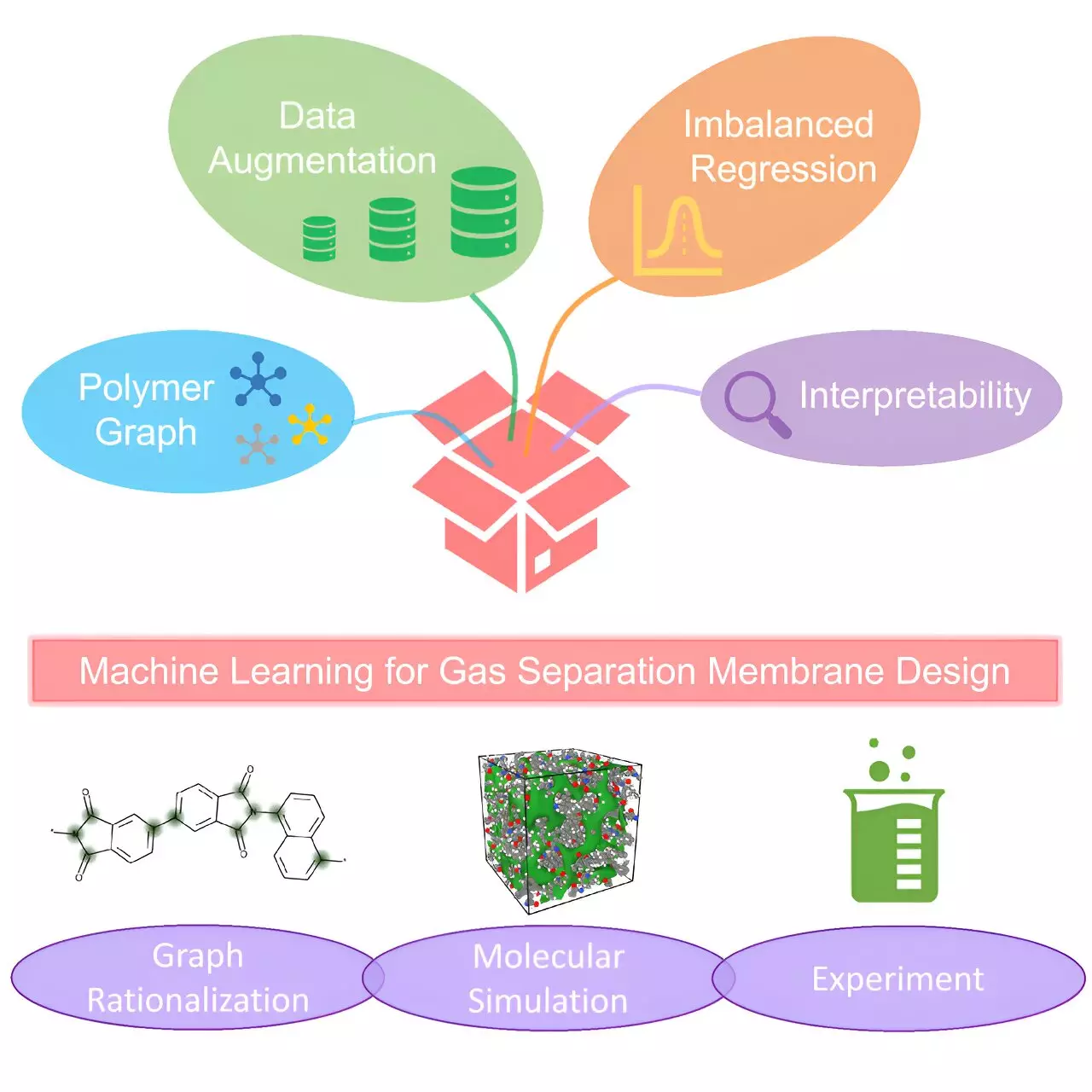Gas separation is a crucial process in various industries, including manufacturing and research. However, current methods are not only energy-intensive but also result in significant carbon emissions. In fact, it is estimated that chemical separation accounts for 15% of U.S. energy consumption, making it an inefficient and environmentally damaging process.
Fortunately, a team of researchers at the University of Notre Dame has made a groundbreaking discovery that could revolutionize gas separation. By applying a graph-based machine learning approach, the team has identified polymer membranes that are up to 6.7 times more effective in separating gases compared to previously synthesized membranes. This innovative approach could pave the way for more efficient and eco-friendly gas separation processes.
According to Agboola Suleiman, a doctoral student involved in the research, the key to the membrane’s performance lies in the material’s microscopic porosity. The ideal membrane material must strike a delicate balance between selectivity and permeability – allowing gases to pass through while blocking others. Through the use of graph neural networks (GNN), the team was able to pinpoint two polymers that possess the desired properties for superior gas separation.
One of the challenges faced in synthesizing polymers for gas separation is the lack of comprehensive data on their molecular structure and chemical properties. However, the team’s innovative algorithmic techniques, spearheaded by computer scientists Meng Jiang and Gang Liu, helped overcome this hurdle. By leveraging machine learning, the researchers were able to enhance their dataset and gain valuable insights into the molecular properties of the polymers.
Tengfei Luo, the Dorini Family Professor for Energy Studies, highlighted the serendipitous nature of the discovery. The machine learning algorithms led the team to materials that were primarily used for electronics applications, demonstrating the versatility and potential of these polymers. By synthesizing and testing these materials in the lab, the researchers were able to confirm their outstanding performance in gas separation.
The team’s top-performing polymers hold great promise for industrial applications requiring the separation of various gas pairs. By developing membranes that can effectively separate gases, the researchers are paving the way for more sustainable and efficient gas separation processes. This groundbreaking research not only sheds light on the potential of machine learning in material discovery but also showcases the power of collaboration across different disciplines.


Leave a Reply